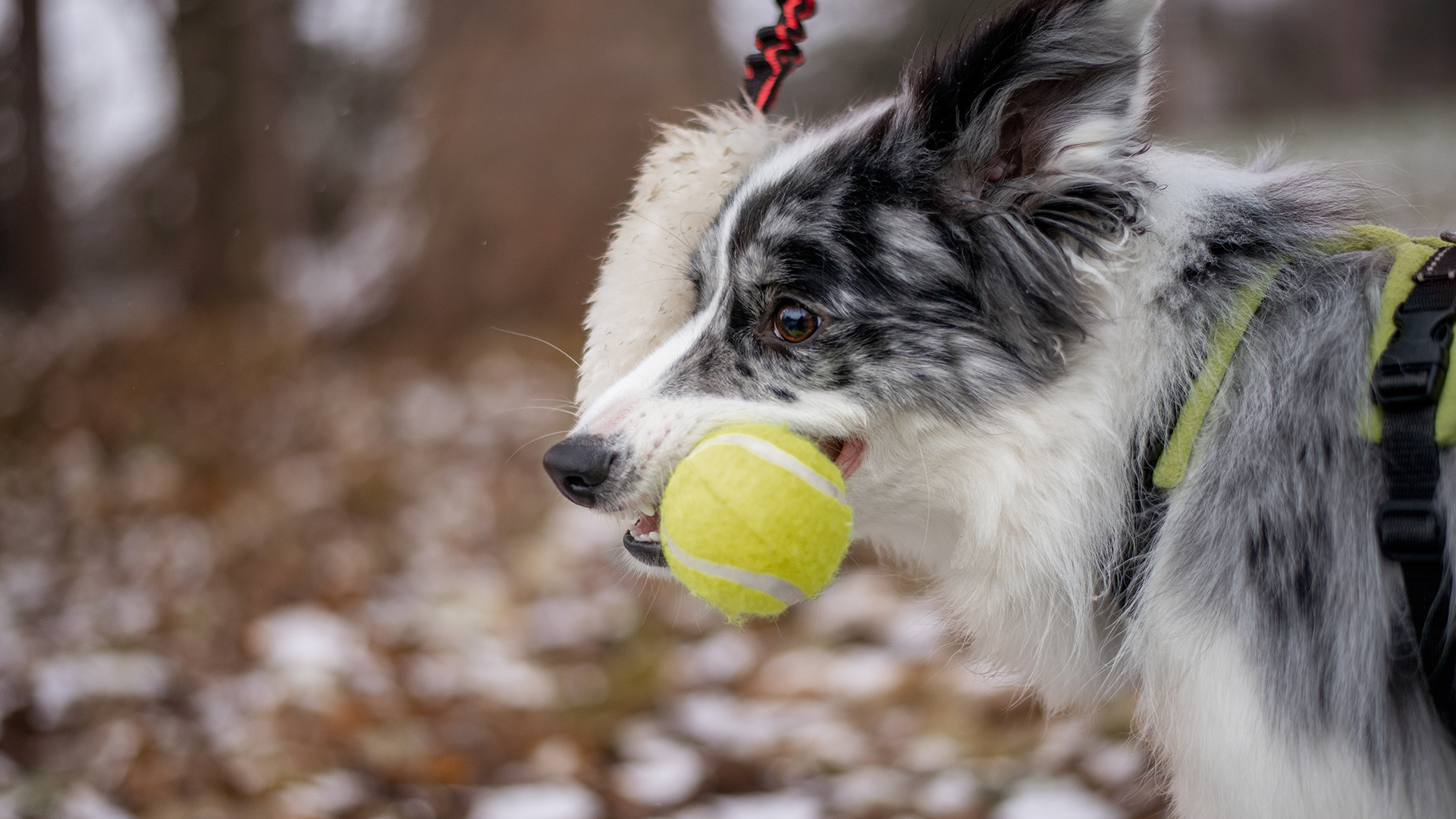I trained my border collie to have perfect recall – even though she had no food drive
A low food drive can be more common than you think, so how do you train a reliable recall?

It’s common knowledge that one of the most important commands you can teach your dog is reliable recall. However, as many dog owners know, this can be easier said than done. The foundation of a good recall is being exciting enough that your dog is motivated to return to you. Many dogs are so food-motivated that having a slice of ham, a cube of cheese, or even a handful of their kibble is enough to make teaching recall a dream. However, there are many dogs that are less interested in food – or are perhaps even ambivalent.
There are many potential reasons for a lack of food drive. Lara Sorisi, an APDT-certified dog trainer and championship gundog trainer says, “If you’ve got a dog that’s really scent-driven, if you offer them a piece of food, they might not be motivated by it because the scent around them is too interesting (if this is the case, I recommend training in a less stimulating environment). Meanwhile, if the food is too low-value many people fall into a trap where they go up the treat hierarchy and are constantly upping the value. Eventually, even a piece of ham or steak won’t be good enough.
“For my own personal dogs that aren’t motivated by food, I only feed them a meal once a day in the evening. I would then give them what would be their breakfast throughout the day as training treats instead. Meanwhile, if the problem is dietary and the food is absolutely rancid to them, then that’s when a vet visit and looking at toy training is particularly important.”
My own border collie Fenwick has a severe chicken allergy that was undiagnosed for the first nine months of her life, thanks to the symptoms only intensifying to a diagnosable state as she got older. Due to this allergy, Fenwick was completely uninterested in food until she reached the one year mark. Not only was it a struggle to get her to eat her food (although this got better when we switched her to one of the best dog foods for allergies on vet advice), but she would turn her nose up at even the most high-value treats we could find. Here’s what I had to do about it…

Lara Sorisi is a science-based and force-free dog trainer that has been training dogs for six years. She is accredited by the APDT (Association of Pet Dog Trainers), which is one of the most rigorous dog training qualifications available. She has attained a bronze-level qualification with UK Sniffer Dogs, which means that she is an accredited UK Sniffer Dogs instructor. She’s also formally competed in gundog trials for three years. In 2021, two of her dogs became field trial winners. Meanwhile, in 2022 she qualified for the Kennel Club 92nd Championship Field Trial for Cocker Spaniels, which will be held in January 2023. In addition to her own competing accomplishments, she’s also produced three award-winning dogs for other competitors as well.
1. Get the right toy
While your dog may have a favorite toy that you think would make a good candidate for a recall reward, you’ll actually want to get a brand new toy that the dog hasn’t encountered before. You’ll also want to pay particular attention to its material. Lara says that “the best recall toys are made out of sheepskin or rabbit fur, or they’re able to hold food that the dog can then get out.”
If you're looking for some toys like this, check out these: rabbit fur toy, sheepskin toy, and this sheepskin toy with bungee.
2. Make the toy a novelty
This is possibly the most crucial step of teaching a recall with a toy – ensure that the dog never has free access to it. While other toys might be stored in a toy box, make sure that this one is kept hidden away and the dog only sees it when they’re interacting with you. This helps to build the association that you’re the most exciting and rewarding thing in the dog’s life. Lara adds, “make sure that the dog only has access to it for a limited amount of time while you’re building a reinforcement history. I like to do this in the house first.”
Get the best advice, tips and top tech for your beloved Pets
3. Tailor the reward to your dog
There’s a common saying in the training world: ‘train the dog in front of you’. While Fenwick loves playing Tug, other dogs might find something else more rewarding. Lara says, “I like to use the dog’s favorite game when using a toy for a recall. So, if you have a dog that likes to chase things, then trail the toy on the ground and make it really exciting for them to chase. Alternatively, if you have a dog that likes to tug, then play a really fun game of tug with them, or if they like to retrieve then use a retrieve with them.
4. Introduce the toy gradually
“Once you’ve got your toy and you know what game you’re going to incorporate, it’s time to start the training.” Lara says, “I take out the toy and play a really vigorous game with the dog once or twice a day, saying the recall command as I do. This can be anything, but I like to keep it simple and say “toy”. These games only last for around 30 seconds or so and then the toy gets put away. Do this every day for a week and you can then increase this to three or four times a day. After that, you can take the toy outside and practice with it there.”
5. Keep it charged
While a toy recall can be extremely effective, it can also be easily ‘poisoned’ (this is when a dog learns that a command is optional rather than necessary). To prevent this, regularly ‘charge up’ your recall by continuing to train with a 30-second game inside your home with minimal distractions. This will continually reinforce that this game is super exciting and way more interesting than anything your dog might see outside.
Lara adds, “essentially, If the texture of the toy is highly reinforcing, you’ve also built up a strong reinforcement history, the dog is never allowed free access and you incorporate the dog’s favorite game, then you’re onto an absolute winner.”
Now that Fenwick is over 18 months old and her chicken allergy is being managed appropriately, she is happy and willing to work for food. We’ve even taught her a separate recall that’s rewarded with treats, which also works very well. However, I still find that her toy recall is by far the most effective weapon in our recall arsenal. In fact, if I ever found myself in an emergency and I needed to recall Fenwick back to me as quickly as possible, I would always choose to use her toy recall.
Looking for more useful content? Find out how to stop a dog pulling on a leash.
Louise Carey is a freelance writer and the Editor of sister website Top Ten Reviews. She has been working in publishing for seven years, contributing to publications including The Independent, TechRadar, Digital Camera World and more. As the proud pet parent of a reactive border collie with a food allergy, it’s been necessary for Louise to explore a variety of fun and exciting ways to enrich an energetic dog that can’t always go on walks. She’s passionate about sharing the information she’s learned to help other pet owners as well.

